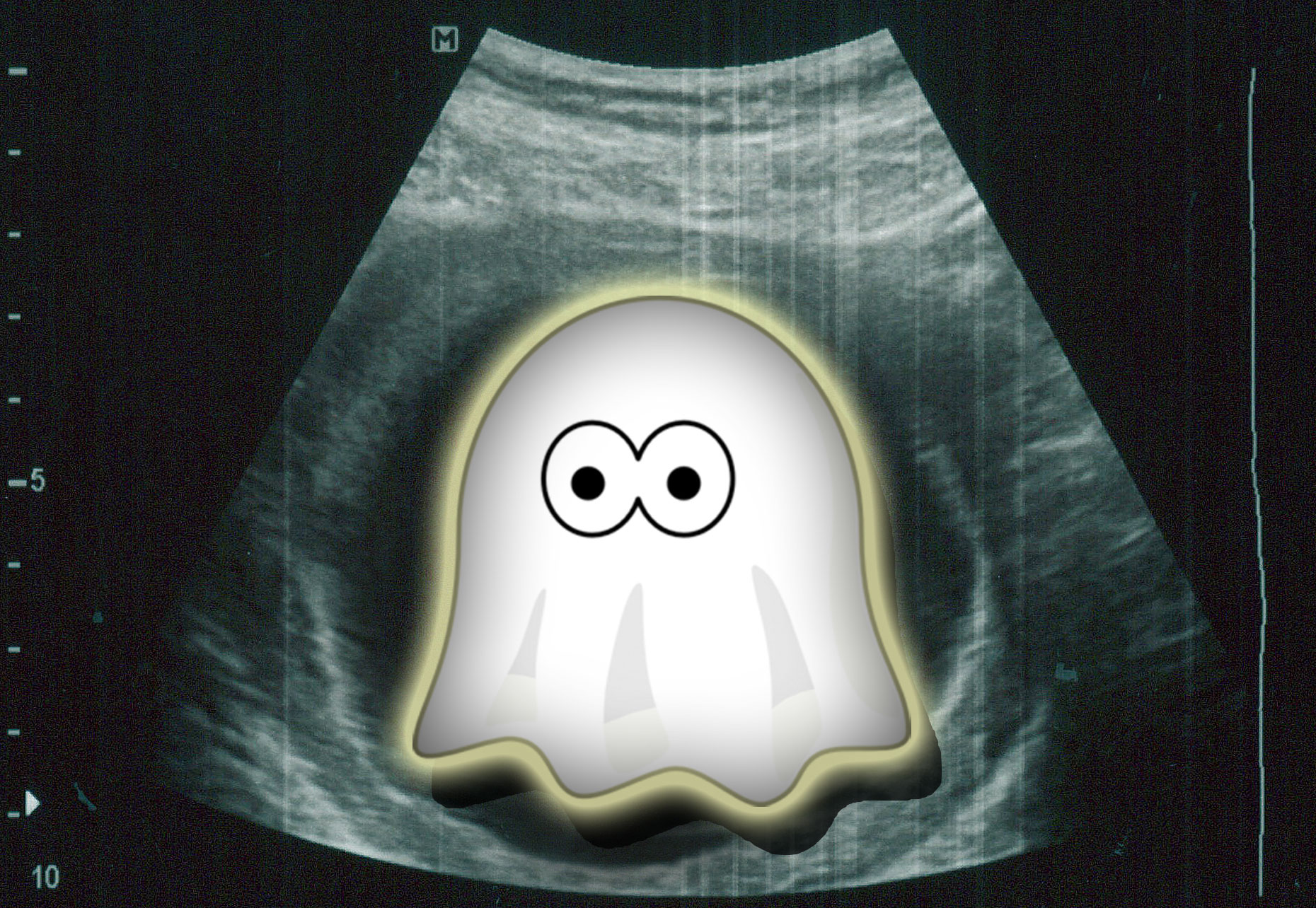
Ghost Abortion Busters
Texas lawmakers' crusade against evidence-based research has made this anti-abortion pseudoscience too hot to touch.

A version of this story ran in the April 2016 issue.
Above: An anti-abortion religious group claims that "ghost abortions" have had a significant detrimental impact on the American economy.
Ghost abortions! They’re coming for us. Or rather, they’re coming for the children that legally aborted Americans would have had after Roe v. Wade, if those Americans had not been legally aborted. So really, the ghost abortions have already come for us, and they continue to do so with every subsequent theoretically not-aborted ghost generation.
Ghost abortions are the impressive work of a man named Michael Voris, who is part of a Catholic media organization called Church Militant. According to Voris, a “ghost abortion” is a missing person who would have existed had his or her mother not already been aborted. This theory came across my radar after the righter-than-right-wing anti-abortion lobby group Texas Right to Life featured a scaremongering blog post about it on its website.
It’s like Back to the Future meets Inception meets a less intellectually challenging version of Veggie Tales. The way Voris figures, there are 70 million or so “missing ” ghost-abortion Americans whose non-existence, multiplied by a per-capita gross domestic product of $54,000 annually, has cost our economy $4 trillion or so.
Now, you might think that drawing a straight line from legalized abortion to a $4 trillion economic loss seems like a preposterous simplification of a complicated question: What is the socioeconomic impact of legal abortion?
If you think that, you are probably one of the social scientists who recently had their intellects insulted by a certain journalist who asked them to take ghost abortions seriously. That journalist is me, and I am sorry.
But Jennifer Johnson-Hanks, the associate dean of social sciences at the University of California at Berkeley, indulged me. She is not a religious ideologue with an online video channel but rather an “ethnographer and demographer of family and the life course.”
“This is a highly unusual way of counting,” she told me via email, after I asked her whether ghost abortions raised any red flags for her.
She identified a couple of problems, the first being the premise that one legal abortion necessarily replaces, over time, one born human. “An abortion prevents, on average, less than one birth,” she said. “We have to confront the fact that many women who abort a fetus later go on to have a child who would not have been born if the abortion had not occurred.”
Instead, she said, we should think on “human terms,” which means confronting the idea that “giving birth changes the mother’s life, and sometimes in ways that lead her to limit her later childbearing more than she would otherwise have done.”
Also worth noting: One-fifth of pregnancies end in miscarriage, which means some aborted pregnancies might never have gone on to result in a born person, anyway. And there’s the fact that no legitimate social scientist would use one calculation — a far-fetched number of “ghost abortions” multiplied by GDP, the use of which mystified everyone I ran this by — to come to any conclusion, let alone this one.
I made these calls to demographers around the time the Texas Policy Evaluation Project (TxPEP), a nonpartisan research group at the University of Texas that studies the impact of budget cuts on family planning services, released a controversial study in the New England Journal of Medicine. TxPEP, using the state’s own data and with the assistance of the state’s own employees, found that fewer Texans got certain kinds of family planning services, and some Medicaid-funded births increased, after the state cut a bunch of money to family planning services.
It was controversial in the sense that the state did not like this set of peer-reviewed facts published in the world’s most prestigious medical journal.
State Senator Jane Nelson derided the study as incomplete. Just days later — a complete coincidence, I’m sure — a state health official named Rick Allgeyer, who was listed as a co-author of the study, resigned from his position as director of research at the Texas Health and Human Services Commission.
Which is maybe why the only academic I got to go on the record about ghost abortions lives in California. Every professional social scientist I called who had any connection to Texas-funded projects, departments or institutions of higher education refused to comment on ghost abortions.
It seems it is a bad time to be doing politically touchy work like refuting the ranting of a right-wing ideologue who believes in ghost abortions. Or publishing peer-reviewed research in the New England Journal of Medicine.

